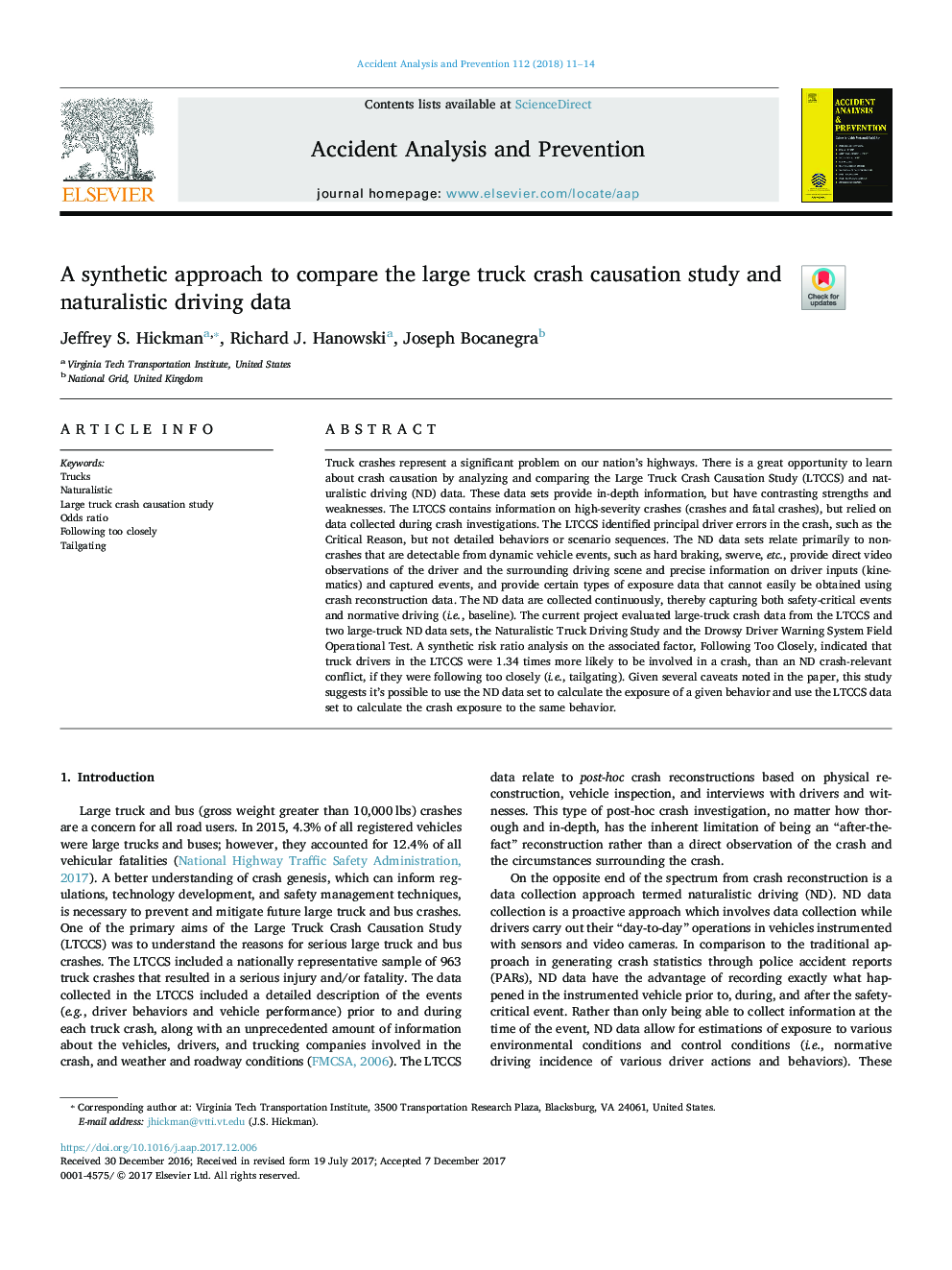| کد مقاله | کد نشریه | سال انتشار | مقاله انگلیسی | نسخه تمام متن |
|---|---|---|---|---|
| 6965227 | 1452887 | 2018 | 4 صفحه PDF | دانلود رایگان |
عنوان انگلیسی مقاله ISI
A synthetic approach to compare the large truck crash causation study and naturalistic driving data
ترجمه فارسی عنوان
یک رویکرد مصنوعی برای مقایسه مطالعات علیت کشش کامیون بزرگ و داده های رانندگی طبیعی
دانلود مقاله + سفارش ترجمه
دانلود مقاله ISI انگلیسی
رایگان برای ایرانیان
کلمات کلیدی
کامیون، طبیعی است، مطالعه علت سقوط کامیون بزرگ، نسبت شانس، به دنبال بیش از حد، تیلگات،
موضوعات مرتبط
مهندسی و علوم پایه
مهندسی شیمی
بهداشت و امنیت شیمی
چکیده انگلیسی
Truck crashes represent a significant problem on our nation's highways. There is a great opportunity to learn about crash causation by analyzing and comparing the Large Truck Crash Causation Study (LTCCS) and naturalistic driving (ND) data. These data sets provide in-depth information, but have contrasting strengths and weaknesses. The LTCCS contains information on high-severity crashes (crashes and fatal crashes), but relied on data collected during crash investigations. The LTCCS identified principal driver errors in the crash, such as the Critical Reason, but not detailed behaviors or scenario sequences. The ND data sets relate primarily to non-crashes that are detectable from dynamic vehicle events, such as hard braking, swerve, etc., provide direct video observations of the driver and the surrounding driving scene and precise information on driver inputs (kinematics) and captured events, and provide certain types of exposure data that cannot easily be obtained using crash reconstruction data. The ND data are collected continuously, thereby capturing both safety-critical events and normative driving (i.e., baseline). The current project evaluated large-truck crash data from the LTCCS and two large-truck ND data sets, the Naturalistic Truck Driving Study and the Drowsy Driver Warning System Field Operational Test. A synthetic risk ratio analysis on the associated factor, Following Too Closely, indicated that truck drivers in the LTCCS were 1.34 times more likely to be involved in a crash, than an ND crash-relevant conflict, if they were following too closely (i.e., tailgating). Given several caveats noted in the paper, this study suggests it's possible to use the ND data set to calculate the exposure of a given behavior and use the LTCCS data set to calculate the crash exposure to the same behavior.
ناشر
Database: Elsevier - ScienceDirect (ساینس دایرکت)
Journal: Accident Analysis & Prevention - Volume 112, March 2018, Pages 11-14
Journal: Accident Analysis & Prevention - Volume 112, March 2018, Pages 11-14
نویسندگان
Jeffrey S. Hickman, Richard J. Hanowski, Joseph Bocanegra,
